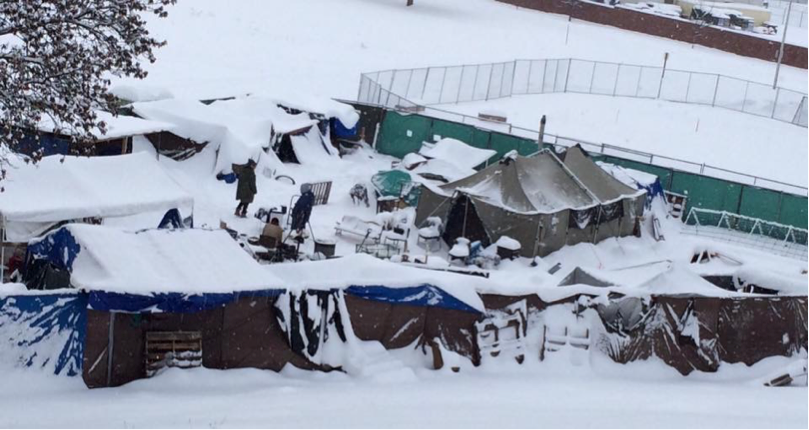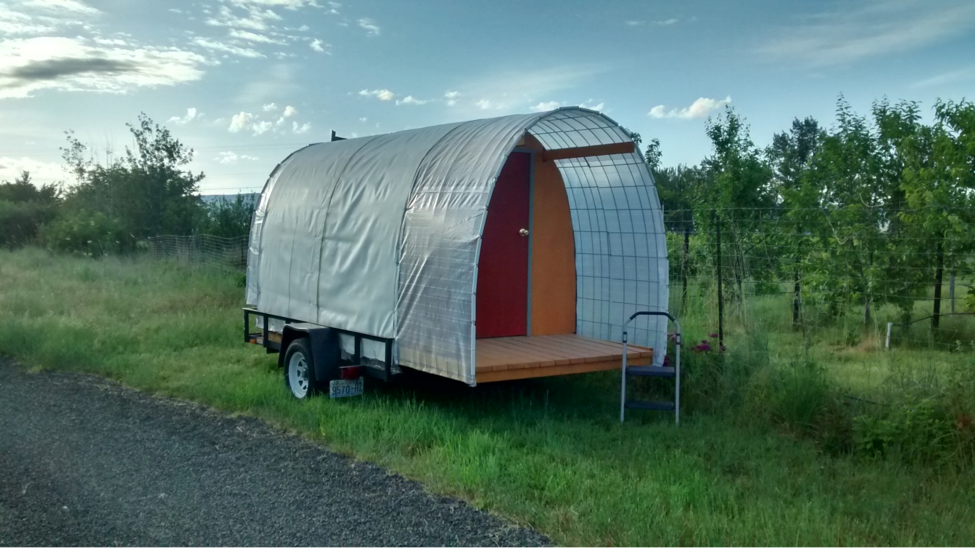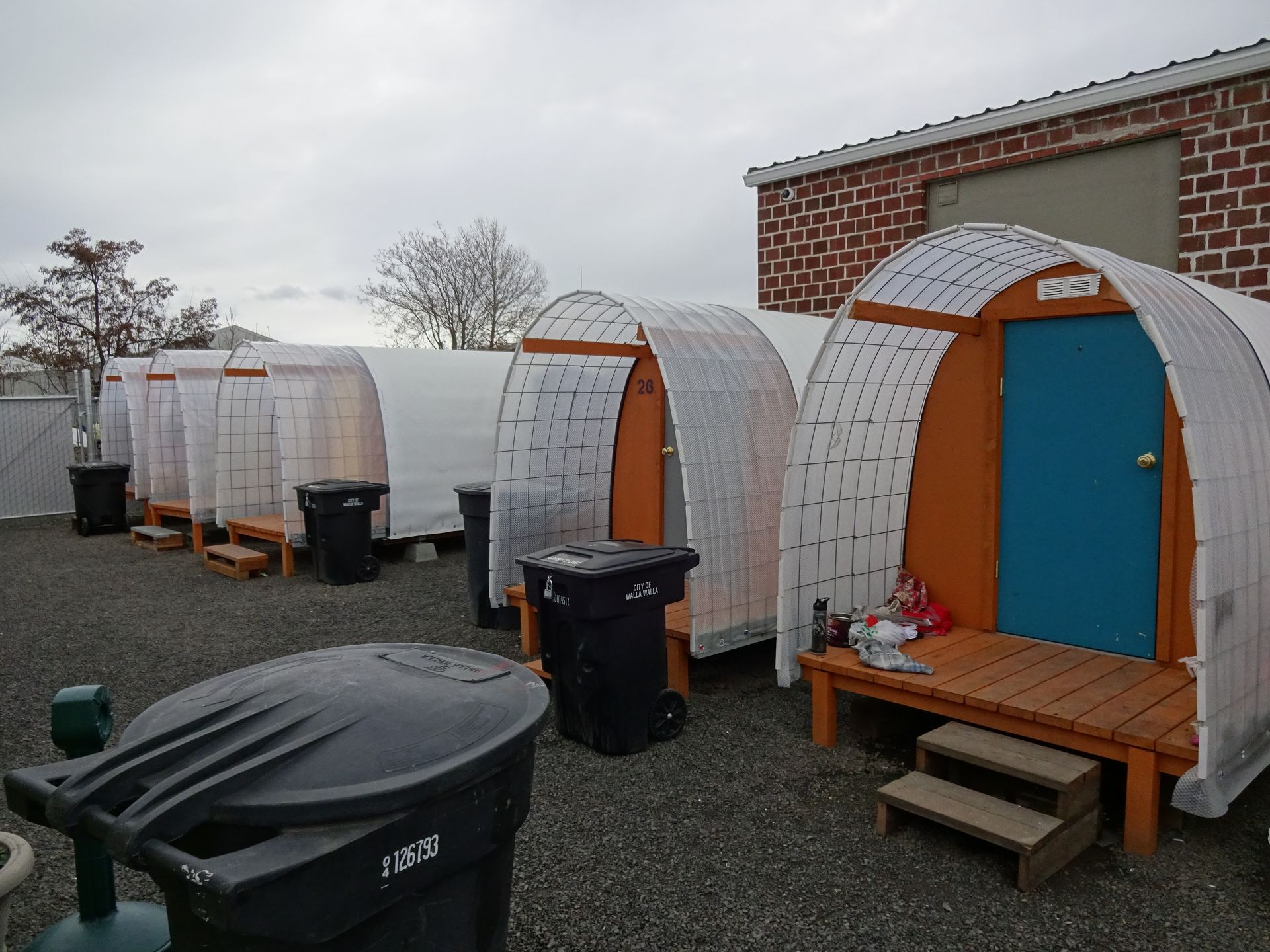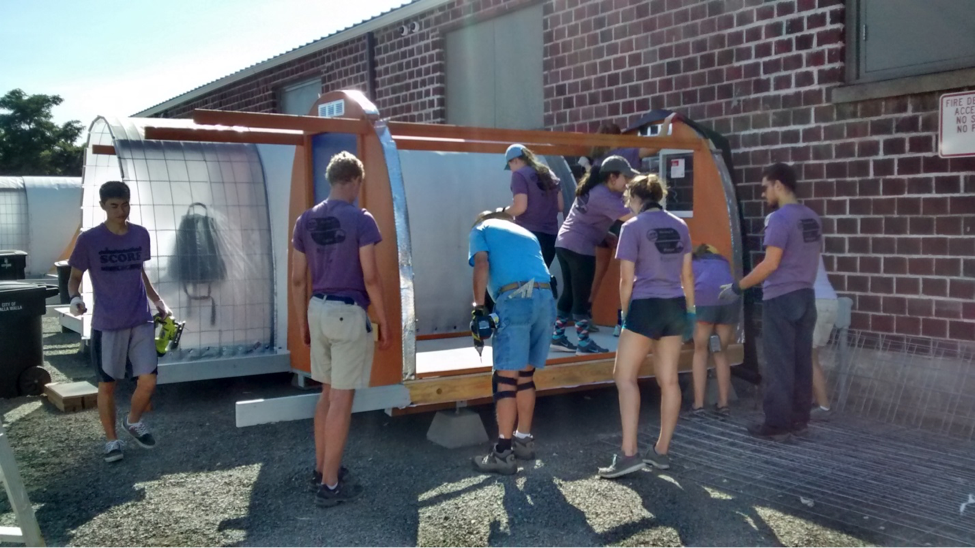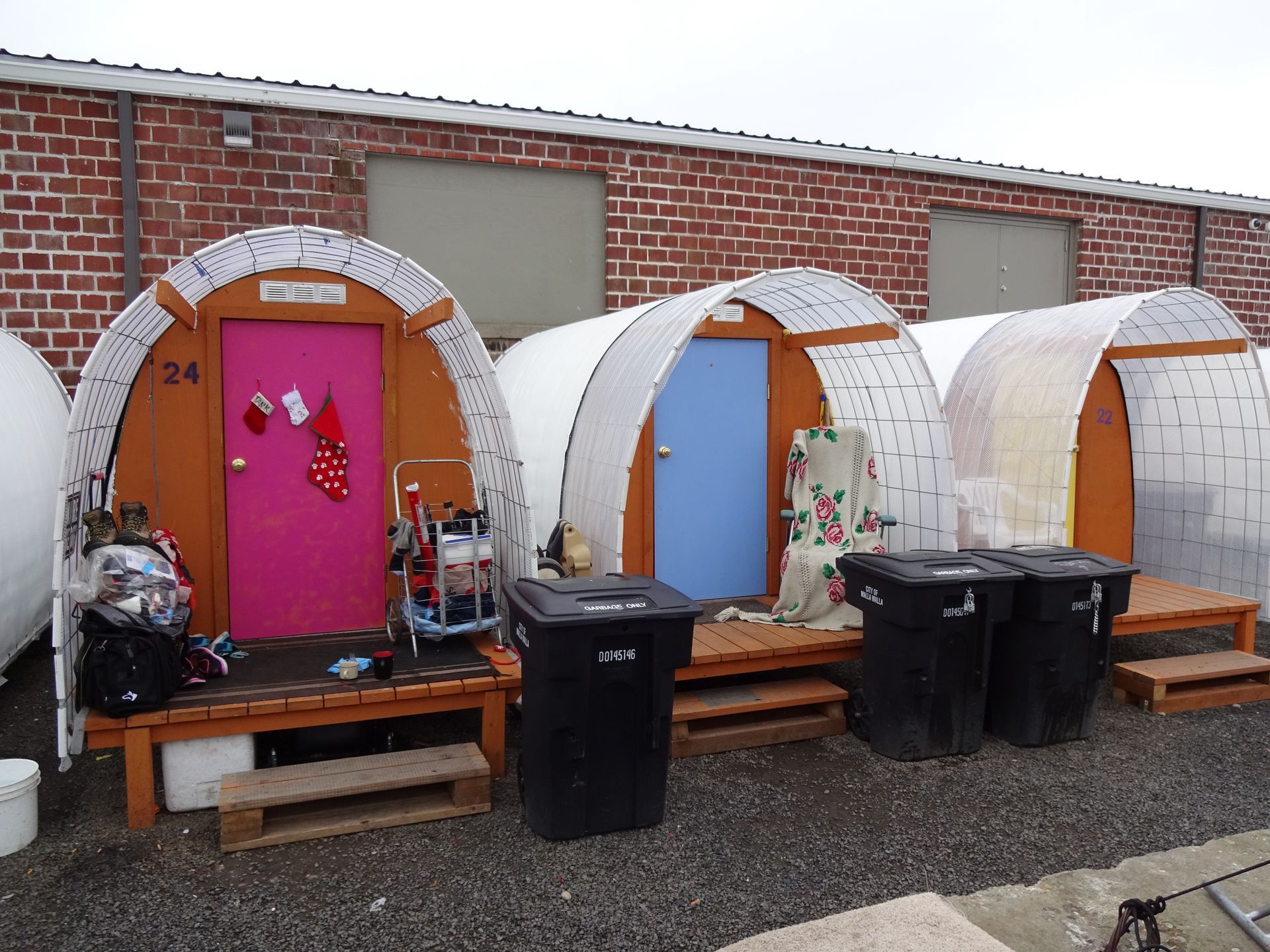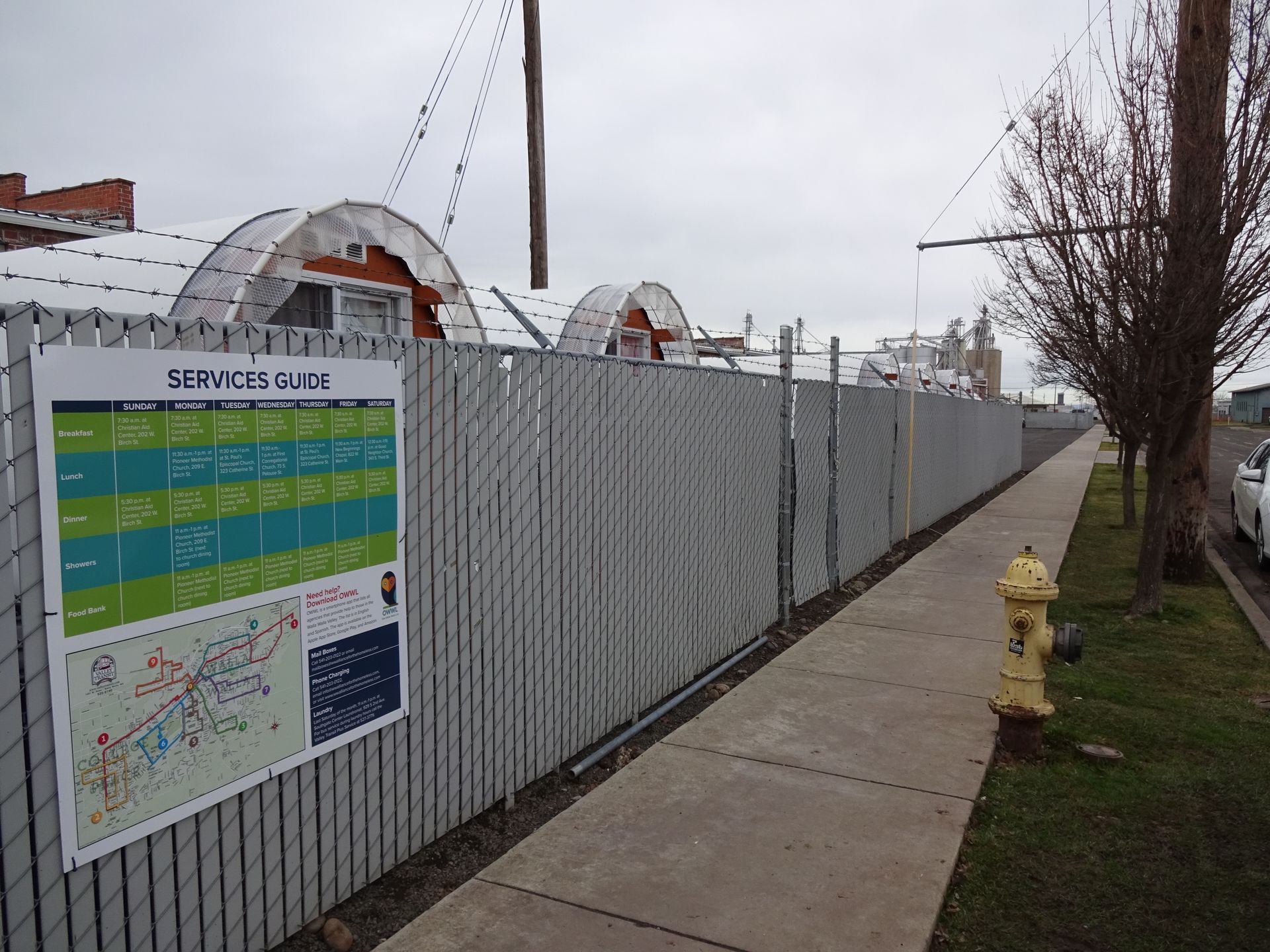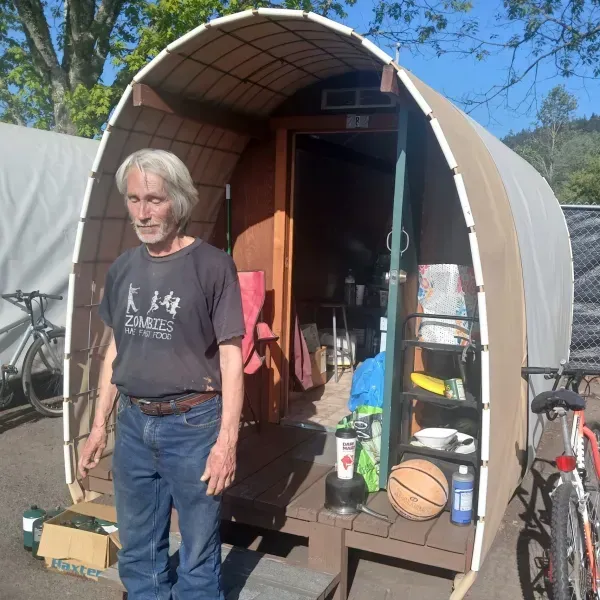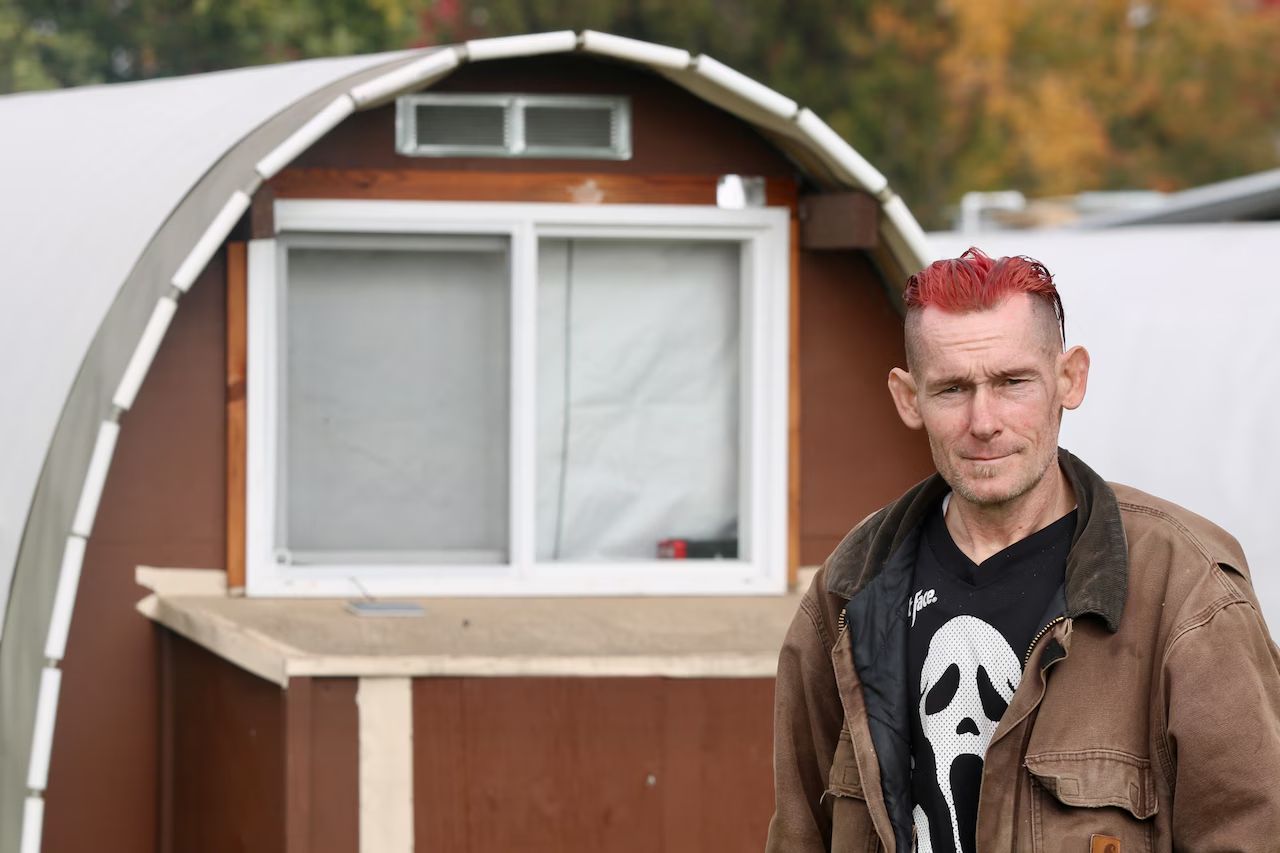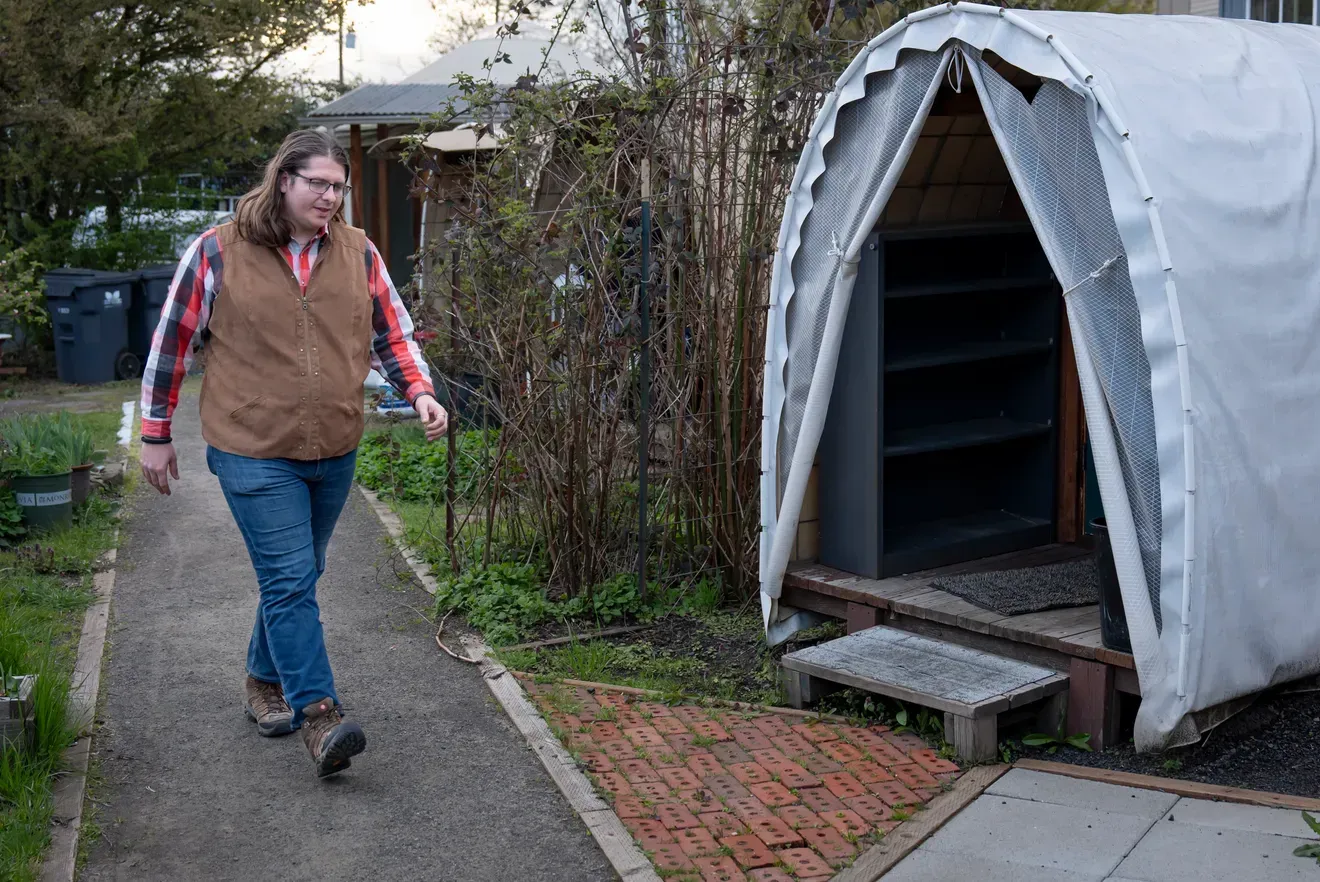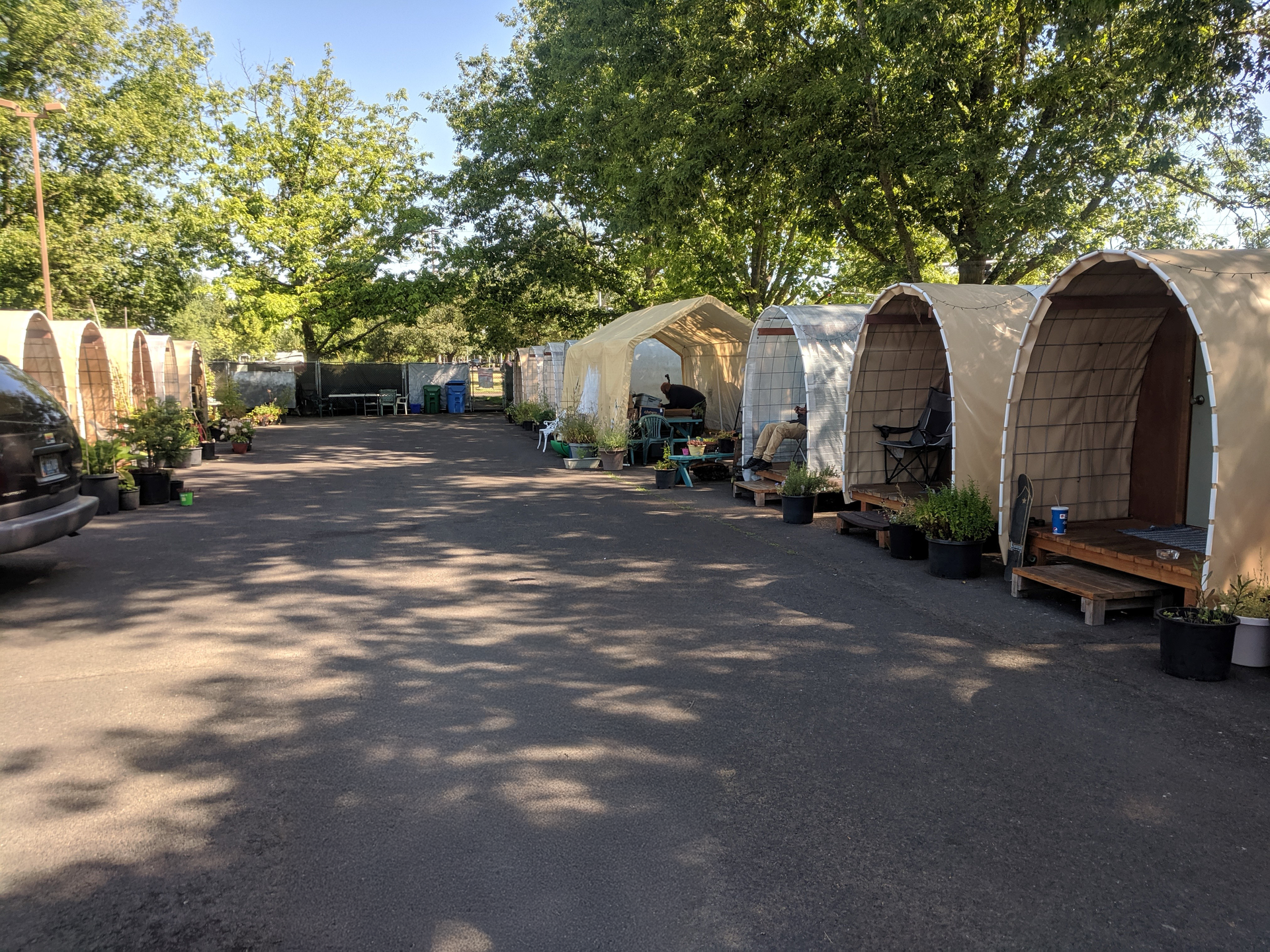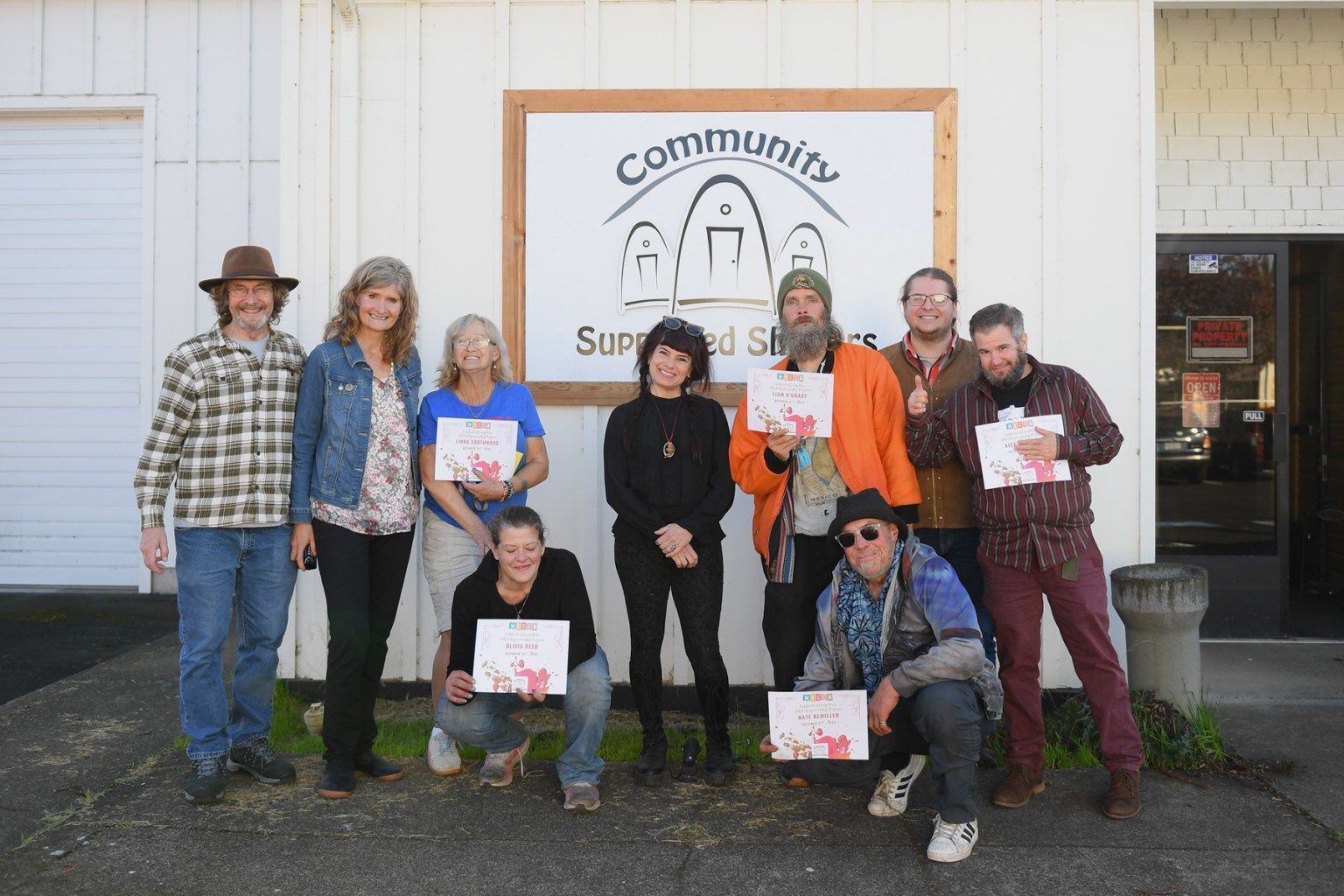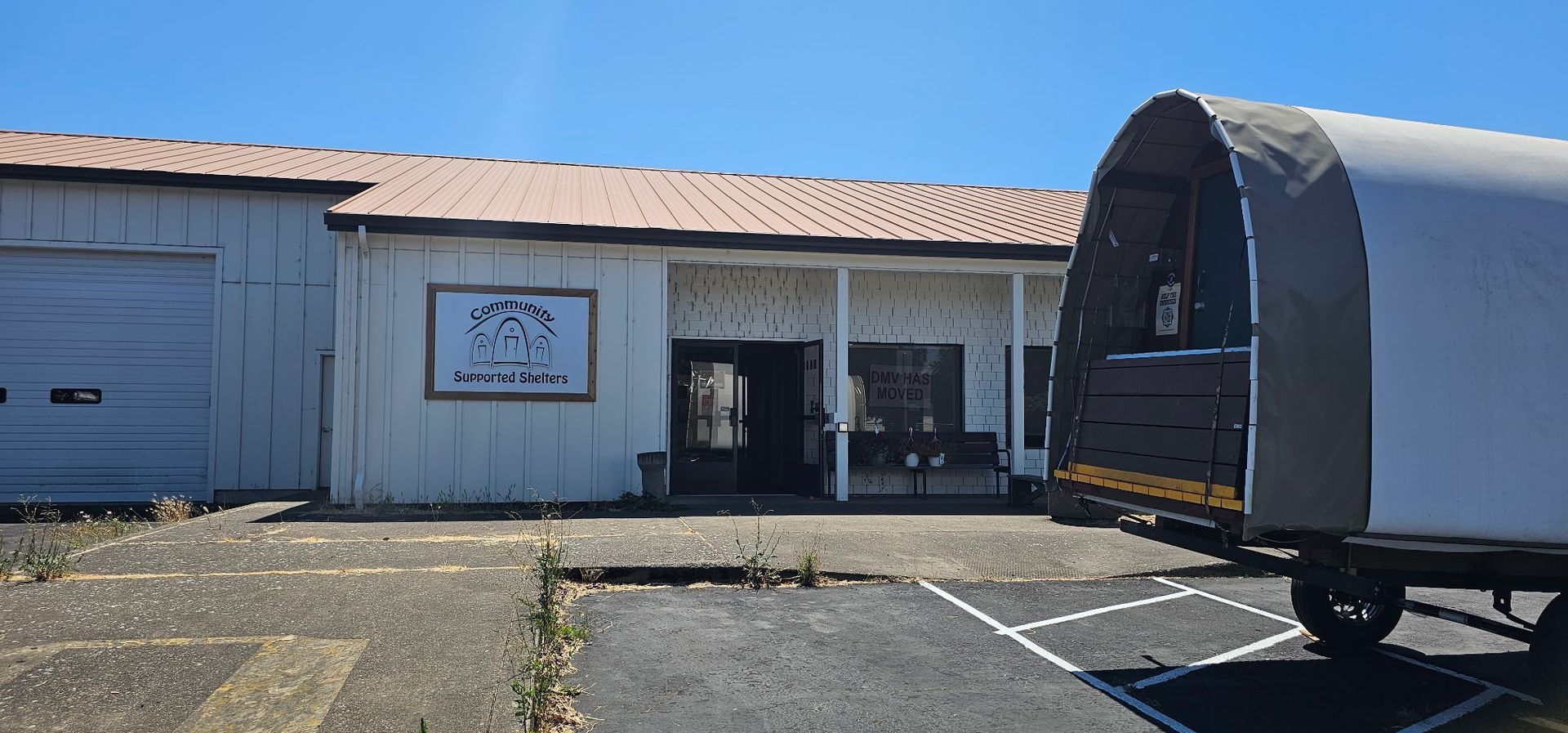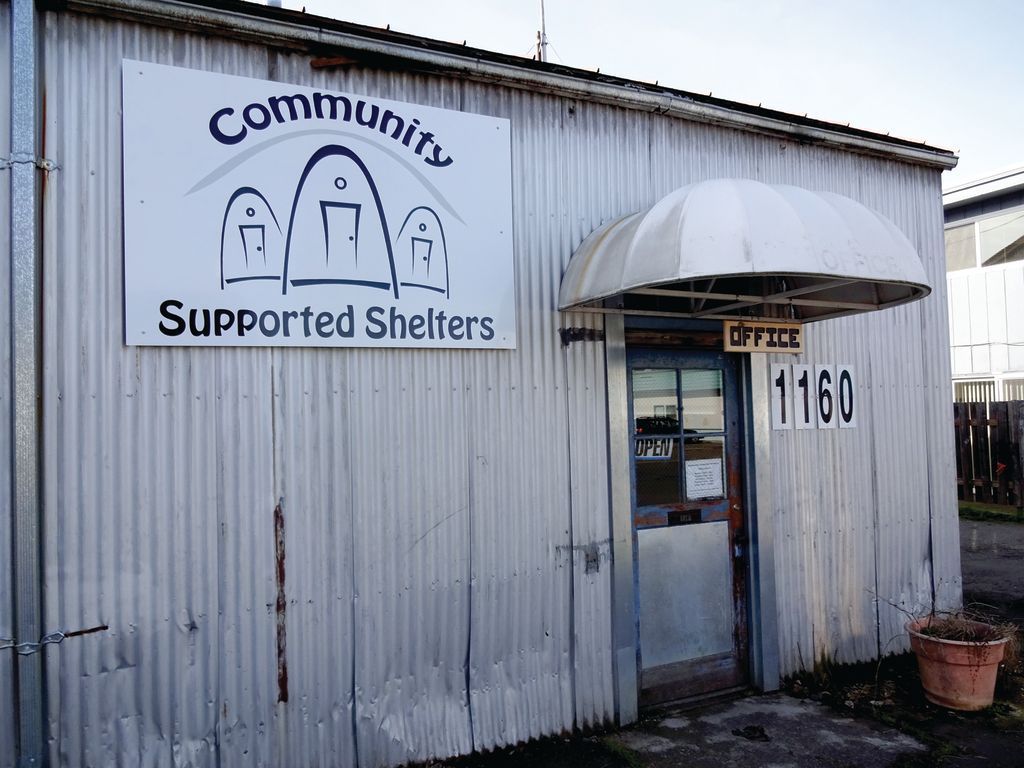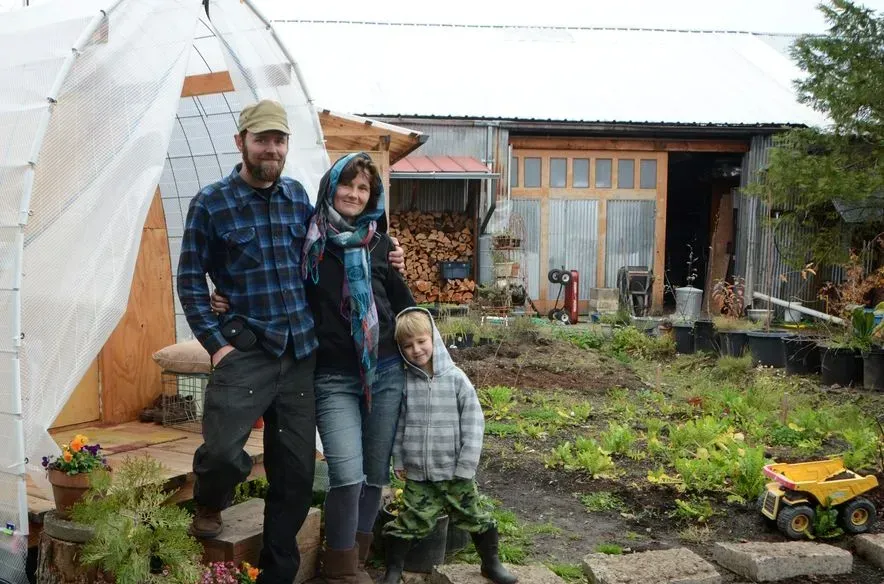The winter of 2016–17 was “devastating” in Walla Walla, Washington: day after day of temperatures rarely going above 20 degrees, winds gusting at more than 50 miles per hour, and repeated dumps of snow. The city’s relatively new homeless camp did not fare well. Tents collapsed or tore, and volunteers from the Walla Walla Alliance for the Homeless struggled to help the residents keep their bedding and clothes dry—to keep people alive. What’s more, the volunteers had no support from the city to make or enforce rules or to provide even a basic amount of safety and security in the camp. “Chaos,” “absolute mess,” “out of control,” “jungle” “like something in Afghanistan or Syria,” are the terms they used to describe it.
“That people didn’t die is amazing,” says Assistant City Manager Byron Olson.
“We weren’t going to do another winter like that,” says Alliance volunteer Craig Volwiler.
The city needed the Alliance because no one else was willing to manage the camp. The Alliance needed the city to provide a site, infrastructure, and support for enforceable rules. Negotiations about a new camp at a new location began even before last winter ended.
Those negotiations, which involved city engineers, police, parks and recreation, the city manager’s office, and the city attorney were often frustrating for Alliance members because the city was reluctant to support the sort of camp that the volunteers believed could succeed. During one of those sessions, Alliance board chair Chuck Hindman said if the city agreed to a more permanent camp site managed by the Alliance, the volunteer group could build 20 Conestoga Huts for it, according to Volwiler, who was at that meeting. The Alliance had not discussed making that sort of commitment.
Later, “as the negotiating got a little uglier,” Volwiler says, “he changed the number to 30.”
Nobody thought they could do it—especially Volwiler. “My jaw dropped because I’m one of the youngest people who’s active and I’m almost 70,” he says. “I didn’t see how this was going to happen.” When the city and the volunteers eventually reached some basic agreement on plans for the camp—based on the Alliance building 30 Huts—he thought, “What are we going to do now?”
The Alliance first heard about Conestoga Huts and Community Supported Shelters when Dan Bryant, pastor of Eugene’s First Christian Church and one of the driving forces behind Opportunity Village, spoke in Walla Walla in April 2016. One of the Alliance’s first initiatives was Madison Park, a tiny house project similar to Opportunity Village. That project was eventually scrapped because of neighborhood opposition and the city piling on so many stipulations to its zoning approval that it became financially infeasible.
The situation for the homeless in Walla Walla, a city of about 32,000 in southeastern Washington, dramatically changed in 2016, when the city passed an ordinance that made it illegal to sleep in public places. That law was a response to downtown merchants worried that people sleeping in doorways could hurt the burgeoning flow of summer tourists, attracted by a flourishing small-vineyard wine industry.
Dan Clark, an attorney and one of the founders of the Alliance, made the city aware of a lawsuit (Bell v. Boise) for which the U.S. Justice Department issued a statement that said, in essence, that it is unconstitutional to ban sleeping in public spaces unless adequate alternative places to sleep are provided. In reaction to that information, the city of Walla Walla put up some fencing around an area of a public park and designated that as the “homeless camp.”
Management of the camp fell to the Alliance. “No one asked us to do it. [But] no one else was going to step in and do it,” Volwiler says. They tried to implement some of the practices they had learned about from the CSS Safe Spots: a set of rules, self-management among the campers, regular community meetings. But none of that worked. The Alliance volunteers had no control over who came into the camp. To serve the purpose of off-setting the public sleeping ban, they had to let everybody in. And, for the same reasons, they had no power to kick anybody out. They were allowed to manage the front gate, but the fire marshal insisted on an unlocked back gate—out of sight of the front gate. There was no overnight management at all.
“Going home at night at 10:30 or 11:00, you knew the party was going to start as soon as your headlights were gone,” says volunteer Jan Foster. “The city knew it was going to fail,” she says. “They had every expectation that it was going to be a jungle.”
Standing in the middle of the new camp, surrounded by 31 Conestoga Huts, she says, “With this, they were very resistant to everything we wanted to do because they knew this would fail, too.”
While in Walla Walla, besides meeting with camp volunteers and clients and Assistant City Manager Olson, de Buhr met with a Monday morning group representing churches and organizations serving the homeless and Alliance volunteers who have just started a pilot program called Exit Homelessness, a more intensive approach to “case management” than CSS’s Action Plan Advisors. Folks in Walla Walla were particularly interested in Eugene’s car camping program and the Safe Spot’s self-management, community building, and handling of limited stays.
It was apparent in the engaged conversations during de Buhr’s visit that volunteers and communities serving the homeless can learn much from each other, that we face many of the same problems. The Exit Homelessness volunteers suggested the CSS look into innovative programs for the homeless being tried in Yakima, Washington, and de Buhr told them that CSS is working on a collaborative effort with folks in Tacoma.
Assistant City Manager Olson said it was important to dispel common myths about homelessness, which seem to exist everywhere, most notably that the homeless come from someplace else (80-85 percent of Walla Wall homeless are “homegrown,” he says) and that homelessness can be cured, like polio was with a vaccination. We lack the resources to take care of everyone with significant mental health issues, he says, and “we are going to have homeless vets, as long as we . . ,” his voice trailed off. “ . . . Go to war,” someone else finished his sentence. Olson’s son served three tours of duty in Iraq and Afghanistan. “This is not a problem that is going to go away or disappear,” Olson says.
Volunteer Jan Foster, 74, in addition to spending four hours a night, seven nights a week at the Sleep Center and having been an active member of the Conestoga building crew (“Busting our hump, but always laughing, that’s what I remember.”), keeps a daily log of the activities at the camp that she shares with other volunteers. She details the comings and goings of clients and volunteers and what community groups brought food (tamales, pulled pork sandwiches, hard boiled eggs, ice cream, and more) or made donations of clothing or bedding and such. But the heart of her journal entries are the ongoing stories of the people who come to the Sleep Center and the efforts of the volunteers to help in some way. Told with humor and candor, the entries reflect the frustration and sadness that can pile up when dealing with troubled people with limited resources and tools, but also the love and joy that such work can bring. A few entries from a single night in January (names of the clients withheld at Foster’s request):
- [6 p.m.] . . . And AB, for no reason anybody can fetch, tears a strip off Nancy for housing all the shitheads down there in his vicinity. Completely gratuitous rudeness, which in addition scares young C. I know what’s working AB’s squeejaw: his housing search has failed yet again, and his voucher extension lapses on the twenty-third of this month. After that, he’ll have no chance at all, having no steady income.
- [8 p.m.] . . . Nancy says that DE cleaned the whole parking strip of dog poop this afternoon. DE does not even own a dog. Piling up treasure in heaven, that guy; also, the highest recommendations from Sleep Center volunteers, if such should ever have any value in his housing search.
- And I’m afraid I’ve done F wrong in accusing him of telling people I’m selling drugs in camp. No no. According to GH, F’s telling everybody I’m using drugs in camp. (Well, chocolate, yeah, guilty. But I can control it. Can take it or leave it alone. Honest.)
- [9:58 p.m.] J gives me a book he picked up at the Just Right closeout: The Perfect Horse. Combination of horses and history neither of us can resist; he knows I’ll hand it back when I’ve read it.
A good indication of the more than night-and-day difference from the old camp to the new are the last entries from Foster’s log on several nights about a year apart.
- 27 January 2017, 9:50 p.m.: I go home, hoping not to hear fire engines in the night.
- 1 February 2017, 10 p.m: Just as I am leaving, a furious fight breaks out between C and D . . . K is waiting at the gate to walk me to my car. He shakes his head.
- 4 February 2017, 10:15 p.m.: K brings the three axes and hatchets into the office tent just in case.
- 26 January 2018, 10:05 p.m.: All quiet as Peter and I go home
- 29 January 2018, 10:10 p.m.: All quiet as I go home.
- 2 February 2018, 10 p.m.: All quiet as Peter and I go home.


